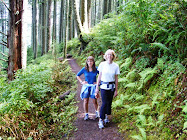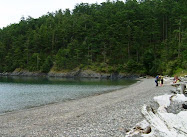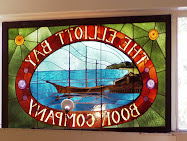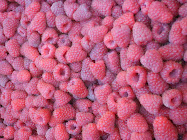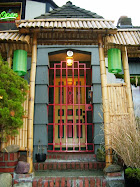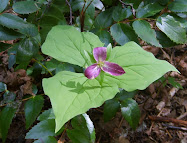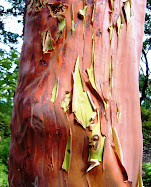Before the sun rises I'm awake, fidgety and excited to paddle once again in the San Juan Islands. With a banana and Clif bars stashed in the car for breakfast, I'm on the road early from Friday Harbor. My goal is to get on the water before the winds pick up.
When I arrive at Smallpox Bay in San Juan County Park a bit after 7 o'clock this cool May morning, a southwesterly breeze is already causing the big American flag at the park office to dance and flap. But no one else is here yet.
(Actually, the park doesn't open until 8 a.m.)
When I arrive at Smallpox Bay in San Juan County Park a bit after 7 o'clock this cool May morning, a southwesterly breeze is already causing the big American flag at the park office to dance and flap. But no one else is here yet.
(Actually, the park doesn't open until 8 a.m.)
Thankfully, no whitecaps are forming on the small bay and in Haro Strait beyond, so I park and start hauling my Mariner Coaster kayak and gear down to the beach.
After launching from the beach, I paddle out to open water and then steer southward toward Lime Kiln Point State Park a few miles away. So far the sun hasn't risen high enough to clear the rocky shoreline of shadows, so I stray far enough off shore to catch the morning sun.
When I pass the historic lighthouse at Lime Kiln Point, I swing out even farther offshore to avoid getting tangled in the lines of several guys fishing in this bottomfish preserve.
Just before I reach the point, a big bald eagle glides straight overhead. A kayak guide I met the day before said there are a couple active eagle nests along this stretch of shoreline.
After paddling hard for 90 minutes while scanning the sea for signs of orca, I decide to slow down and start exploring the shoreline instead. While the orcas continue to elude me, I never tire of spotting seals, sea stars, and waterfowl.
First, though, I just let myself hang in the water and drift for a few minutes in the protected water behind the rocky outcrops of Pile Point. When I round the point close to the rocks, a smallish gray seal less than 10 feet away slips into the water with a splash.
 |
| Group hug! |
With strong tidal exchanges and huge volumes of Salish Sea water flooding and ebbing through Haro Strait, the San Juan Islands shorelines are rich with sea life. I skirt around kelp forests and eelgrass beds, some of the most productive ecosystems on the planet.
Kelp are also a great way to gauge the tidal currents. As I turn around to kayak back north, the long bull kelp strands are all pointed due south, indicating a strong ebbing current. (A reminder to myself and all you kayakers out there - remember to check the tide tables before heading out on any kayak outing in the Salish Sea.) With the wind now at my back, the currents are flowing in the opposite direction, which makes for some choppy, squirrely water around the points I pass heading back north.
 |
| Historic Lime Kiln Point Lighthouse. Note the big spotted seal on the rock outcrop to the left. |
As I round a point while hugging the shoreline below a rocky bluff north of Lime Kiln, the oncoming current is so strong that I can't make any headway despite paddling as hard as I can. Time to retreat. I paddle back to a protected cove and wait 30 minutes. When I see another kayaker coming from the north, I try again, farther away from shore this time.
Next time I make it by surfing some big waves from the wind at my back. 'Twas a little scary exciting.
So I didn't see any orcas, but a big seal did roll over on its back and scratch its belly as I glided past (just for me, of course :). And whales or not, by my reckoning, not much beats four hours of breathing fresh sea-kissed air while kayaking in the San Juan Islands.
So have you had the thrill of seeing orcas while you were out kayaking? Or something else equally exciting? Let us know with a comment below. Thanks!
When You Go
Numerous outfitters offer kayak tours out of Smallpox Bay, with some tours heading north and others heading south. Discovery Sea Kayaks, San Juan Outfitters, and Outdoor Odysseys are few that offer guided tours for beginners as well as seasoned kayakers. If you're on your own, be sure and check the tides/currents for the day.
























































